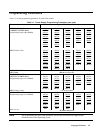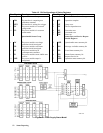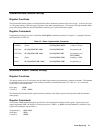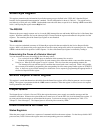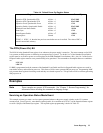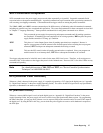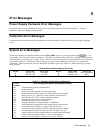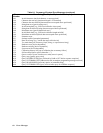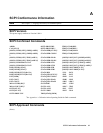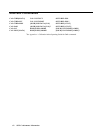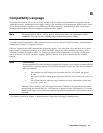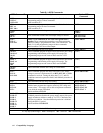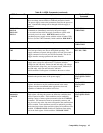
Status Reporting 57
SCPI Command Completion
SCPI commands sent to the power supply are processed either sequentially or in parallel. Sequential commands finish
execution before a subsequent command begins. A parallel command can begin execution while a preexisting command is
still executing (overlapping commands). Commands that affect trigger actions are among the parallel commands.
The *WAI, *OPC, and *OPC? common commands provide different ways of indicating when all transmitted commands,
including any parallel ones, have completed their operations. The syntax and parameters for these commands are described
in "Chapter 3 - Language Dictionary". Some practical considerations for using these commands are as follows:
*WAI This prevents the power supply from processing subsequent commands until all pending operations
are completed. If something prevents completion of an existing operation, *WAI can place the power
supply and the controller in a "hang- up" condition.
*OPC?
This places a 1 in the Output Queue when all pending operations have completed. Because it
requires your program to read the returned value from the queue before executing the next program
statement, *OPC? could prevent subsequent commands from being executed.
*OPC This sets the OPC status bit when all pending operations have completed. Since your program can
read this status bit on an interrupt basis, *OPC allows subsequent commands to be executed.
The trigger subsystem must be in the Idle state in order for the status OPC bit to be true. Therefore, as far as triggers are
concerned, OPC is false whenever the trigger subsystem is in the Initiated state. However, OPC is also false if there are any
commands still pending.
Note For a detailed discussion of *WAI, *OPC and *OPC?, see "Device/Controller Synchronization
Techniques" in ANSI/IEEE Std 488.2.
DFI (Discrete Fault Indicator)
Whenever a fault is detected in the power supply, it is capable of generating a FLT signal at the digital port (see "Appendix
D - Digital Port Functions" in the power supply Operating Guide). The source for the DFI signal can be any Questionable,
Operation, or Standard Event status event (see Figure 4-1).
RI (Remote Inhibit)
Whenever a remote inhibit signal is received at the digital port (see “Appendix D - Digital Port Functions” in the power
supply Operating Guide), the power supply will receive an RI event at the Questionable Status register. By programming
the status subsystem, you may use RI to generate a service request (SRQ) to the controller and/or to create a DFI output at
the digital port. By using RI/DFI in this way, you can chain the power supplies to create a serial shutdown in response to
the INH input.




